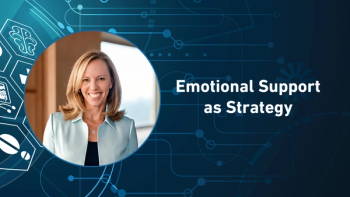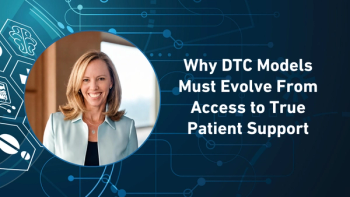
- Pharmaceutical Commerce - May/June 2010
The Drive to Develop New Commercial Models
Industry’s coming challenges will force dramatic change on how products are brought to market and businesses are sustained. Industry leaders have already started the process
By all accounts, biopharma executives have a complex 2010 agenda, requiring that they work tirelessly to:
- Reconsider their basic business models while driving efficiencies in their in-line assets, with 75% of mature markets being undifferentiated (see box) by 2015
- Improve their launch capabilities and effectiveness in the face of only 3% of historical launches considered as excellent, according to the 2008 IMS Launch Excellence Study [1]
- Capitalize on opportunities in pharmerging markets even though only 23% of companies are reallocating resources to these opportunities currently.
- Seek and deliver on new corporate growth drivers.
… all while considering an environment that will evolve several times over the next 10 years. Meanwhile, they must continue to conduct business as usual—the equivalent of changing an aircraft’s engines in mid-flight.
Maximizing the efficiency of commercial operations is standard fare for companies operating in a difficult economy with budget constraints. Yet, because the biopharma world is being upended, creating commercial efficiencies is no longer simply about managing costs; it’s about devising a New Commercial Model (NCM) that better leverages available or yet-to-be-discovered approaches to suit the new market reality. This requires fundamental change that ranges anywhere from incremental to substantial. Yet, based on IMS research conducted with 500 industry executives, over 90% of respondents have not implemented any major changes to their go-to-market approaches. [2]
The good news is that as the business environment evolves, a clearer picture of the task ahead appears. IMS has been on the forefront with our clients helping the industry define, quantify, and address these new challenges. A few of our key findings include:
- A proven framework to guide NCM development across five key building blocks, from situation analysis through implementation
- The most common pitfalls we have observed companies encounter along the way
- Some of the emerging best practices we are recognizing in the market.
A marked departure from the past
By 2015, biopharma manufacturers will be pressed to evolve their commercial practices in fundamental ways within the world’s mature markets. Two circumstances, in particular, will shape not only how biopharma manufacturers go to market, but what they market:
• In just five years, the world’s leading biopharma markets will be dominated by products that are largely undifferentiated from their competitors. As seen in Figure 1, the degree and timing of commoditization is not uniform across the mature markets; the fact that each country is different dictates a country-level approach to model development. For the US, in the near term, price increases will be the primary tactic used to maintain market value. By 2020, however, substantial increases in market value will also come from the launch/uptake of pipeline products. Alternatively, the EU will see changes in market value driven by volume, not price, in the short term.
Currently, 45% of all promotional spending is focused on the commoditized markets (based on an analysis of eight major countries—Fig. 2). Compared to the peak in the industry’s field force seen in 2005, more than 40% of the industry’s representatives could be displaced, and one in six of those remaining will be assigned new responsibilities.
• Robust Health Economics and Outcomes Research (HEOR) arguments promoting the cost savings of a new drug are not the only way to measure progress. Various stakeholders will continue to look to the industry for improvement in the holistic treatment of disease—improvements that extend beyond the benefits of a chemical compound or biomolecule. Relationships formed in cyberspace between the extended healthcare delivery mechanism and patients will allow companies to better match their treatments, programs, and investments to patient needs, driving improved individual outcomes.
In order to thrive within this environment, what strategies and tactics should companies adopt? How must they transform their commercial operations? At what rate and pace must change occur?
All of these and other critical questions can be answered by applying five key building blocks, based on each individual company’s current state and needs:
1. LANDSCAPE ASSESSMENT
Companies that have not yet determined their future direction should develop a common point of view on how the healthcare environment will change over the short and long term. Essential to this is recognizing how power will shift among the stakeholders for a given therapeutic class in a given geography. And more precisely, what aspects of demand will be driven by the stakeholder versus the healthcare environment, key market events, or other factors? What will each group require over time? What influences dominate?
Extensive research and analysis of industry information to spot key trends and estimate timelines is paramount to developing this picture of the future. Accordingly, adequate time and attention must be given to this phase for the information to be properly assembled and assessed.
The results may be quite surprising. In one landscaping exercise for a mid-tier company, the biggest factor in the company’s future environment was not the shift of stakeholder power from general practitioners to payers, but rather the rapid entry of alternative products. Yet another example unearthed legislative changes on the horizon that far outweighed the organization’s concern over the future influence of private payers. In both cases, misinterpreting information or making uninformed decisions could propagate worse misjudgments in succeeding steps.
2. STRATEGIC PLANNING
Companies that have already established their commercial context need to assess the timing and importance of various trends and events. Which developments will have the most impact on the company’s capabilities, franchise, or portfolio? What are the new requirements, and what response is required? At the end of this phase, a company will have a clear idea of how its commercial model is—or is not—prepared to meet the demands of the future.
The fundamental decisions that must be made can become overwhelming without the discipline of a tested approach for evaluating the options. In helping to develop a strategy for a large biopharma manufacturer, we found that even though there was general consensus on the future factors, the company’s strategy to deal with the changes was confusing and not aligned—if not openly contested—among the key executives. Alignment workshops with key leaders were needed to arrive at a common approach.
In a Special Report published by IMS (2009) [3], we found it helpful to divide the strategic response into three iterative levers: those that address the “how” of sales and marketing through efficiency and effectiveness improvements, those that address the “who” within the market with tactics for improving relationships with stakeholders, and those that address the “what” is taken to market with tactics that expand the value proposition of the product “beyond the pill.” Each lever in the commercial model can be employed simultaneously but to varying degrees to suit the circumstances within each geography, therapeutic area, and organization.
3. CAPABILITY ASSESSMENT
Any change in a company’s commercial strategy also directly affects a wide range of capabilities within the organization. Depending upon the types of changes implemented, companies may need to build or amend their marketing, technical, motivational, reporting, and analytical capabilities—to name a few.
Additionally, the capabilities required for executing the new strategy need to be measured, so new or evolved Key Performance Indicators (KPIs) must be developed. As such, not only do the capabilities themselves require attention—so too do the systems, processes, and approaches that assess them.
4. ORGANIZATIONAL DESIGN AND DEVELOPMENT
For companies that have designed their blueprint and enabled the required capabilities, the task at hand is to organize the change required to support the implementation of the new strategy. They must consider the structural implications (the organization, roles, and responsibilities) as well as non-structural implications (processes, tools, skills, and knowledge). Are there new roles that need to be created to support the new requirements? Are sufficient resources allocated internally and externally to meet new priorities? Do the current resources possess the right job skills? Can they be trained? Are vendors and partners capable of executing the new requirements?
Companies often underestimate the effort required to drive even step-wise evolutionary change. Working with one larger company, our team grew concerned over the number of internal approvals required to develop the capabilities that would support the new strategy. More enlightening was the amount of informal and formal objections encountered when the players were exposed to “change.” Drawing boxes on paper is not difficult, but drawing the reporting lines can be more cumbersome. The real focus—and the fundamental objective—should be in making it work.
We see companies make the most progress planning their new organization and supporting processes when they bring together people from geographical management, brand leadership (sometimes with emerging P&L responsibilities), and those in charge of new service strategies. In the end, most strategies will engage all of these stakeholders in different contexts. Examples of some successes we have witnessed include:
- Regionalization. Moving accountability and decision making closer to the customers by dividing responsibilities across the field force and HQ.
- Key account management. Organization of new internal and external teams to service established stakeholders with new needs.
- Evolving brand teams. At both the global and local levels, giving brand teams full P&L (and therefore operating income) responsibilities. Increasingly, the brand manager is the operational architect responsible for executing the go-to-market strategy, making decisions on how to invest, what channels to use, and how resources will be allocated.
- Employee satisfaction as a key performance indicator. Employee morale can be a good barometer of how well the NCM is being implemented and received, both internally and externally.
5. EXECUTION AND PERFORMANCE MANAGEMENT
The argument of whether to affect an evolution or a revolution is still raging in the industry — with some still questioning the need to change at all. Based on the same 500-respondent survey referenced above, only 6.2% of surveyed companies have implemented any major changes. At the end of all the good work and effort described above, it only counts if you use and maintain it until there is an impact. For many companies, this is where the strategy meets its doom, for as the roadmap is sent down the line to be implemented, it is quickly dismantled due to budget limitations, technological deficits, and other “unnatural” boundaries.
The ideal pace of change will depend, in some part, on the company’s culture and current state. For example, those firms with well run and tightly integrated technological enterprises that underpin a culture of transformation and change should be able to move more quickly to capture competitive advantage. It is also a hypothesis in the market that smaller or more specialized companies should be able to move faster. The key is that each company should make a rational decision based on how much it can take on, considering both the risks and rewards.
To date, most change that we’ve observed has been to augment existing approaches or to make incremental moves, such as to regionalization or a different channel mix. However, today we see a couple of pioneering companies poised to make largescale change, and we believe the industry is on the brink of putting it all together.
Bringing all the pieces together involves taking action on the broader strategic plan. This will include, but is not limited to, changing commercial strategies, redeveloping commercial partnerships, aligning the organization and staff to new objectives and measurement, and then layering this on top of new infrastructure. This of course will take time, and we will see if as an industry we can go further than “toe deep.” We believe that since the biopharma industry is now armed with proven approaches to define the future, a view past the patent cliff, and many solid examples of innovation and transformation, it will soon take the next steps as an industry.
A glimpse at the future
The most common question, so what does the future look like? In these situations it is always best to explore the continuums of what will be — and then the rest falls somewhere in the center. Taking this approach, we can profile two very different commercial situations – a company with a large commodity product and previous megabrand, and then a second company with a differentiated product in a highly specialized field of medicine.
Previously the megabrand was supported primarily with a large sales force. Now facing competition from generics — but still presenting a proven and admired product profile, the focus must change to maximizing operating income and post-generic value – more than likely with generic pricing plus a small premium. This means more-efficient marketing approaches and agile operations in general. Relationships must be managed and matured in the electronic world, with new relationships developed and pulled in via a strong value proposition – beyond just the product.
On the surface it seems simple, but in reality this represents a massive capability and organizational change that includes a significant reduction in the current field force in favor of an installation of a service-based field force for sample delivery and related support. Additionally, re-development of internal systems to deliver value via “e-channels” and telemarketing and a fundamental redesign of all planning processes — including brand and annual planning, amongst others, will be needed. It also requires a new lean, highly flexible organization skilled in “e-based” mass marketing, social networking and focused on whole-product solutions that encompass holistic disease management, patients and their families and prevention. Changes to commercialization occur in real time and are locally deployed and efficient.
On the other end of the continuum, the highly differentiated product delivers challenges of its own. Protected from competition somewhat by manufacturing barriers to entry, and of course patent protection, the focus is on education, awareness and science. To succeed, the company is strategically aligned across multiple functional areas and is working toward a common vision centered on optimal patient management and the exchange of scientific understanding. All of this in an environment where there is, in most cases, no quantifiable treatment regimens. Representatives must develop and nurture the scientific aspects of the relationship — but also engage patient communities and support groups, advocacy groups and families. This requires a specialist sales force wrapped around science and holistic engagement with the patient. Internal systems and processes will need to deliver significant value to all the stakeholders, making them much more complex than the commodity systems described above – but if properly built, can effectively support the product over the life cycle and across multiple indications. An increasing reliance on electronic information exchange technology will be a key aspect of the infrastructure for all stakeholders. Organizations will be robust within geography and brand – with specialization across stakeholder and sub-geographies. As with commodity products, services will also need to be effectively sourced and delivered as the brand cannot bear the costs of better engagement and services simultaneously. Execution will be slow and measured around longterm interaction and relations that encompass the patient, product and all stakeholders. PC
REFERENCES
1. “Defining Global Launch Excellence” — An IMS Special Report (2008)
2. IMS New Commercial Models Within the Pharmaceutical Industry™ (2009)
3. IMS New Commercial Models — Special Report 2009 – “Understanding New Commercial Models in the Pharmaceutical Industry”
Articles in this issue
over 15 years ago
Smoothing the Path to Drug Safetyover 15 years ago
Pharma, FDA Wrestle with Social Media Toolsover 15 years ago
Defending Fair Market Value (FMV) Assessmentsover 15 years ago
The Time Is Right to Reform Your Approach to Managed Careover 15 years ago
Deloitte 2010 Survey of Health Care Consumersover 15 years ago
Surprise! Employment Is on the Rise--in Contract Salesover 15 years ago
Medical-Claims Database Analysis of Off-Label Prescribingover 15 years ago
Global Pharma Logistics Offers More OptionsNewsletter
Stay ahead in the life sciences industry with Pharmaceutical Commerce, the latest news, trends, and strategies in drug distribution, commercialization, and market access.





